Bear Garlic: [Cultivation, Care, Irrigation, Substrate and Characteristics]
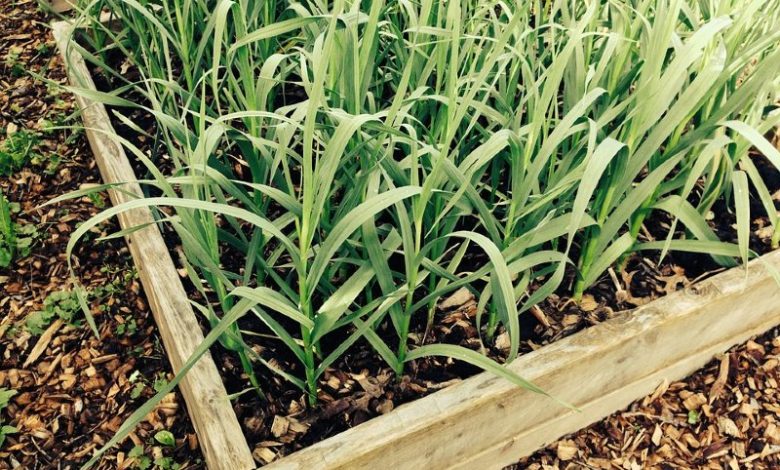
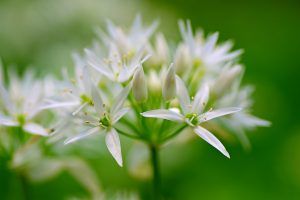 Bear’s garlic (Allium ursinum) is one of the plant species that can be grown in home gardens with a dual purpose: ornamental or food.
Bear’s garlic (Allium ursinum) is one of the plant species that can be grown in home gardens with a dual purpose: ornamental or food.
It is a wild species that produces an edible bulb, similar to garlic, and to which numerous benefits have been assigned.
In order for it to develop optimally, bear’s garlic needs moist and cold soils when it comes to germinating.
A curious fact is that it owes its name to the food preference of the bears that live in the environment where this plant grows, as it is among their favorites.
Having it at home can be a real gift.
If you want to learn how to grow Bear Garlic in your garden, take a look at this article
Important points when sowing Ajo de Oso
- When? Between September and October.
- Where? In semi shade, on moist soils.
- How do we prepare the land? With moisture and compost.
- How should we water? Drip irrigation.
- How often do you have to water? The normal thing is to water every two days without flooding.
- What pests and diseases does it have? Bear ‘s garlic is very resistant and you just have to be careful with the leek miner.
Characteristics of bear’s garlic
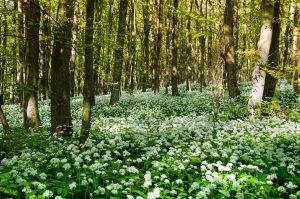 Very few vegetables are truly shade tolerant and as productive, versatile, and useful as wild garlic (Allium ursinum), also known as bear’s, ramps, or ramson’s garlic.
Very few vegetables are truly shade tolerant and as productive, versatile, and useful as wild garlic (Allium ursinum), also known as bear’s, ramps, or ramson’s garlic.
Allium ursinum is a perennial bulbous herbaceous monocot, which reproduces mainly by means of seeds.
Narrow bulbs form from the base of a single leaf and produce entire elliptic bright green leaves up to 25 cm long x 7 cm wide with a petiole up to 20 cm long.
The inflorescence is an umbel of six to 20 white flowers, lacking the bulbs produced by some other Allium species such as Allium vineale (crow’s garlic) and Allium oleraceum (field garlic).
The flowers are star-shaped with six white tepals, about 16-20 mm in diameter, with stamens shorter than the perianth.
When to sow bear’s garlic?
Bear ‘s garlic seeds need to have a more or less cold environment to germinate.
Hence , autumn becomes the best time to start this process, relying on the months of September and October.
Bear’s garlic is a plant that carries out an annual cycle of development, remaining dormant during the summer.
Where to plant bear’s garlic?
- Bear’s garlic needs to grow on soils with a high level of moisture and preferably between neutral and basic.
- As the bulb measures approximately 1 cm, it is important that the soil also has depth.
- As for shade, semi-shade is ideal to prevent excessive sun from burning its leaves and causing water stress.
- Another important detail that must be taken into account is that the nitrogen levels in the soil are good.
How to prepare the land?
- The preparation of the land will enrich it with organic matter, with homemade organic matter such as compost being a great ally for this issue.
- Although it is a fairly adaptable plant, it will grow stronger and more vigorously to the same extent that its nutritional requirements are met.
- Another important point is to ensure that the soil is well humid, performing appropriate irrigation in the days before planting.
- This simple action will make it easier for moisture to penetrate and for the seeds to find themselves in an ideal environment to germinate.
How do we water?
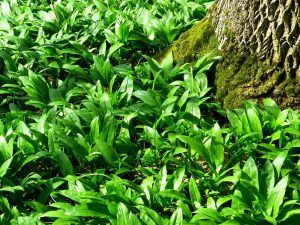 Irrigation should preferably be done by drip to have greater control of the amount of water to provide in each session.
Irrigation should preferably be done by drip to have greater control of the amount of water to provide in each session.
For this, a gardening watering can would be the most suitable instrument, but any other that fulfills a similar function is sufficient.
How often do we water bear’s garlic?
The most common is to apply irrigation every two days in areas with good relative humidity.
However, this is not a standard that is strict in all cases, since the characteristics of each environment must be assessed in detail.
Above all, it is important to adjust the irrigation periods according to the seasons of the year, increasing it in summer and reducing it in winter.
In any case, the most important thing in this whole process is not to flood the ground to avoid rotting.
How to plant garlic is bear step by step?
Planting bear’s garlic is one of the tasks that may be simpler in this whole issue of growing species in the garden.
This is a very invasive plant (if left unchecked), so it won’t be lost after you process it for the first time.
This is because after the flowering process each year, she herself will be in charge of multiplying and maintaining the species.
In any case, it is worth knowing the process to follow when planting wild garlic:
- Obtain seeds from the previous blooming period or purchase them from your favorite farm store.
- Prepare the soil by adding compost and watering it in the previous days to ensure humidity.
- Spread the seeds in the area designated for this purpose, regardless of the distance between one and the other.
- Lightly press each seed and cover it with a little soil to prevent them from being removed by the wind or that the ants have an easy job of carrying them away.
- Moisten the ground a little more, but without producing puddles.
What care does bear’s garlic need?
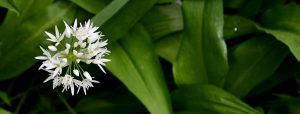 The sowing of bear’s garlic in shaded areas responds to the need to preserve a cool environment, since it does not support excessive heat.
The sowing of bear’s garlic in shaded areas responds to the need to preserve a cool environment, since it does not support excessive heat.
In addition, it grows stronger when it is located in a wooded area or, at least, one that has prominent vegetation.
In any case, a good technique is to apply mulch since this will allow the internal humidity levels to be preserved.
As it needs nitrogen throughout its development, it is important to ensure average fertilization planning, especially in poor soils.
What pests and diseases affect you?
One of the main favorable characteristics that bear’s garlic has is its resistance.
Being a species of wild condition, it is not very prone to attack by pests and diseases, so it can be worked without worries.
In any case, as precaution is best, you can pay attention to outbreaks of the leek miner, especially if you have or have had this crop nearby before.
The positive part is that dealing with it, in case it appears, does not involve major complications because installing a trap will be more than enough.
Studies have revealed that there are about 700 species of bear’s garlic in the world, so enjoying any of them will become very feasible.
With its ability to adapt, it will be easy to keep it in any space and enjoy its properties, beauty and exquisite aroma.
So if you were thinking about having it but you couldn’t decide, this is the right time to do it. Go ahead!


![Photo of 23 Resistant Outdoor Plants: [List, Characteristics and Care]](https://www.complete-gardening.com/wp-content/uploads/2022/08/23-resistant-outdoor-plants-list-characteristics-and-care-390x220.jpg)
![Photo of Change Soil pH: [Adjust, Change, Raise or Lower it]](https://www.complete-gardening.com/wp-content/uploads/2022/08/change-soil-ph-adjust-change-raise-or-lower-it-390x220.jpg)
![Photo of How to Prune Watermelons: [Dates, Tools and Ways to Do It]](https://www.complete-gardening.com/wp-content/uploads/2022/08/how-to-prune-watermelons-dates-tools-and-ways-to-do-it-390x220.jpg)